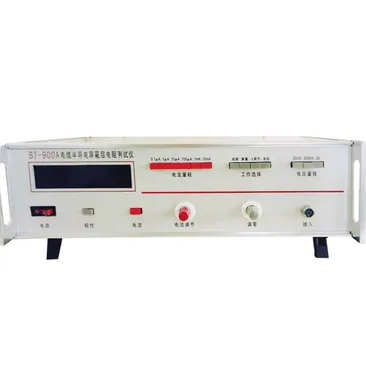cable crosslinking equipment
Understanding Cable Crosslinking Equipment
Cable crosslinking is a critical process in the production of high-performance cables used in various applications, including telecommunications, automotive, and industrial sectors. The effectiveness and longevity of these cables are largely attributed to the crosslinking process, which enhances the thermal, mechanical, and chemical resistance of the insulating materials. At the heart of this process lies cable crosslinking equipment, which serves as a pivotal tool in ensuring these high standards are met.
What is Cable Crosslinking?
Cable crosslinking refers to the chemical process that bonds the polymer chains within the cable insulation material, creating a three-dimensional network. This crosslinking process is vital for improving the stability and performance of cables under demanding conditions. The most common methods of crosslinking include chemical, radiation, and heat crosslinking, each requiring specific equipment tailored to facilitate the desired technique.
Types of Crosslinking Equipment
1. Chemical Crosslinking Equipment This type usually involves the application of crosslinking agents such as peroxides or silanes. Equipment like mixing machines, extrusion lines, and curing ovens are vital in managing the precise application of these agents. The mixing machines ensure a homogenous blend of the polymer and the crosslinking agent, while curing ovens provide the controlled temperature environment necessary for effective crosslinking reactions.
2. Radiation Crosslinking Equipment This method utilizes electron beams or gamma rays to achieve crosslinking. The equipment for radiation crosslinking includes electron beam accelerators and gamma irradiation facilities. These systems must be designed with safety in mind, as they handle high-energy radiation. Their efficiency in creating strong crosslinked structures makes them suitable for high-voltage cables and applications where superior performance is crucial.
3. Heat Crosslinking Equipment This process typically involves exposing the cable to elevated temperatures to facilitate the crosslinking process. Equipment required includes heating chambers, tunnels, and curing ovens, which maintain optimal temperatures to promote the necessary chemical reactions for effective crosslinking. This method is particularly prevalent in the production of wire and cable insulated with thermosetting materials.
cable crosslinking equipment

Considerations in Selecting Crosslinking Equipment
When choosing cable crosslinking equipment, several factors must be considered to ensure optimal performance and efficiency
- Material Compatibility The equipment must be compatible with the types of polymers and crosslinking agents being used. Different materials may require specific processing conditions, and selecting appropriately engineered equipment can prevent defects.
- Capacity and Throughput Depending on production demands, the chosen equipment must align with the required output levels. High-capacity systems can enhance productivity but may require additional investment.
- Energy Efficiency With increasing energy costs and a global focus on sustainability, selecting energy-efficient equipment is essential. Innovations in technology can lead to significant long-term savings and reduce environmental impact.
- Safety Features The safe operation of crosslinking equipment is paramount, especially when dealing with chemicals or radiation. Equipment should include necessary safety measures such as containment systems and adequate ventilation.
Conclusion
Cable crosslinking equipment plays an essential role in the production of high-quality cables that meet the demands of various industries. Whether utilizing chemical, radiation, or heat methods, the right equipment is critical for achieving superior performance and longevity in cable products. As technology advances, cable manufacturers are continually innovating their methods, enhancing the capabilities of crosslinking equipment, and pushing the boundaries of what is possible in cable design and application. As the demand for more robust and efficient cables increases, so too will the importance of sophisticated cable crosslinking equipment in the industry.
-
Why the Conductor Resistance Constant Temperature Measurement Machine Redefines Precision
NewsJun.20,2025
-
Reliable Testing Starts Here: Why the High Insulation Resistance Measuring Instrument Is a Must-Have
NewsJun.20,2025
-
Flexible Cable Flexing Test Equipment: The Precision Standard for Cable Durability and Performance Testing
NewsJun.20,2025
-
Digital Measurement Projector: Precision Visualization for Modern Manufacturing
NewsJun.20,2025
-
Computer Control Electronic Tensile Tester: Precision and Power for the Modern Metal Industry
NewsJun.20,2025
-
Cable Spark Tester: Your Ultimate Insulation Assurance for Wire and Cable Testing
NewsJun.20,2025
 Copyright © 2025 Hebei Fangyuan Instrument & Equipment Co.,Ltd. All Rights Reserved. Sitemap | Privacy Policy
Copyright © 2025 Hebei Fangyuan Instrument & Equipment Co.,Ltd. All Rights Reserved. Sitemap | Privacy Policy
